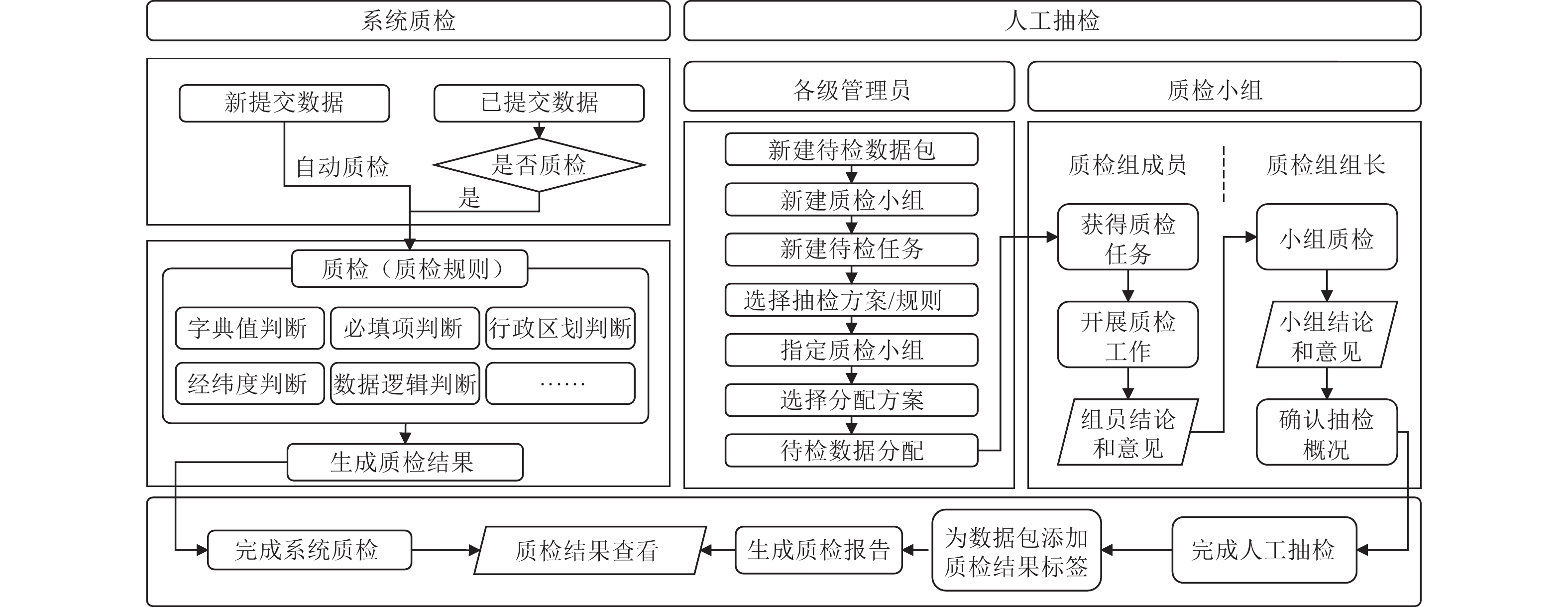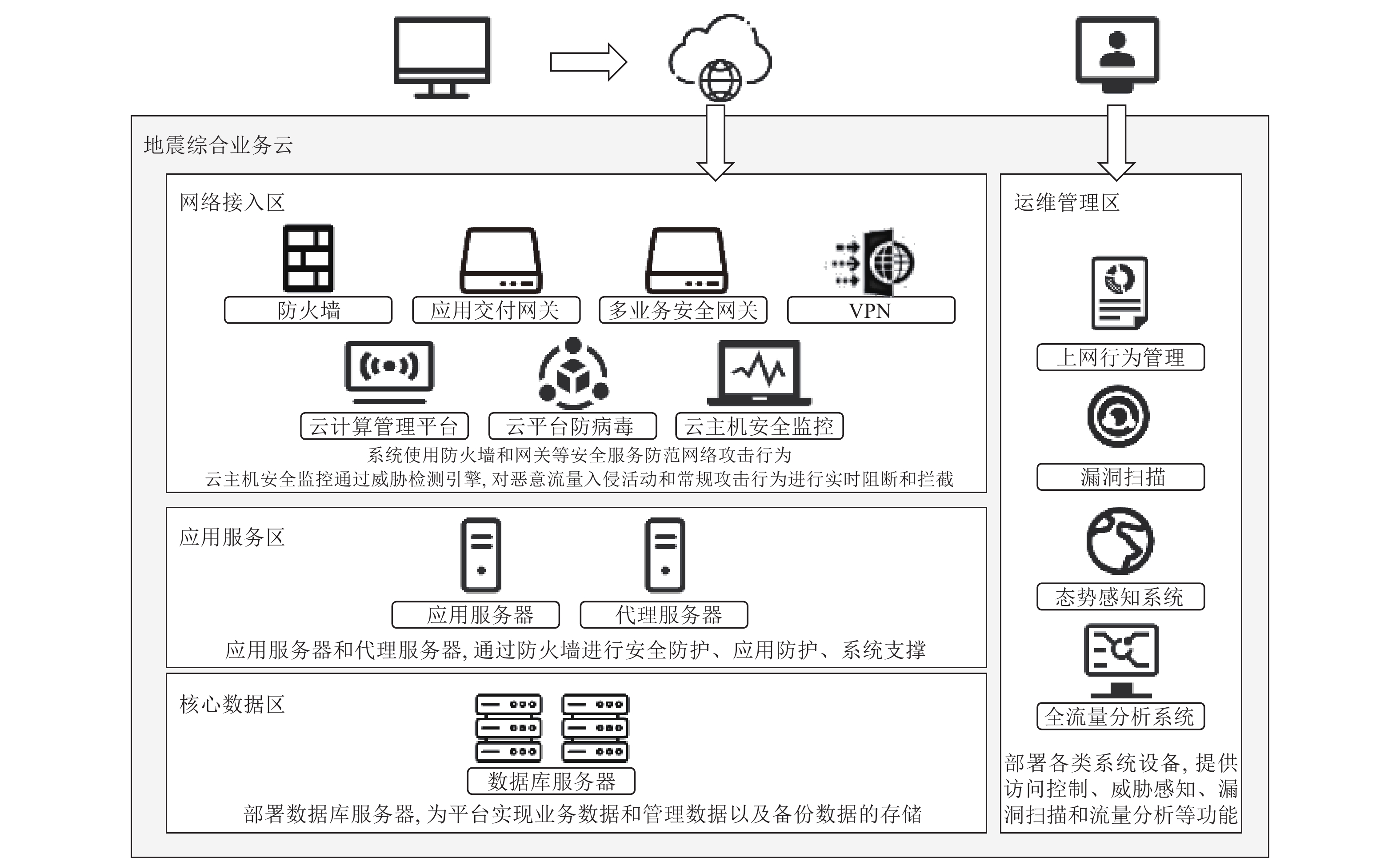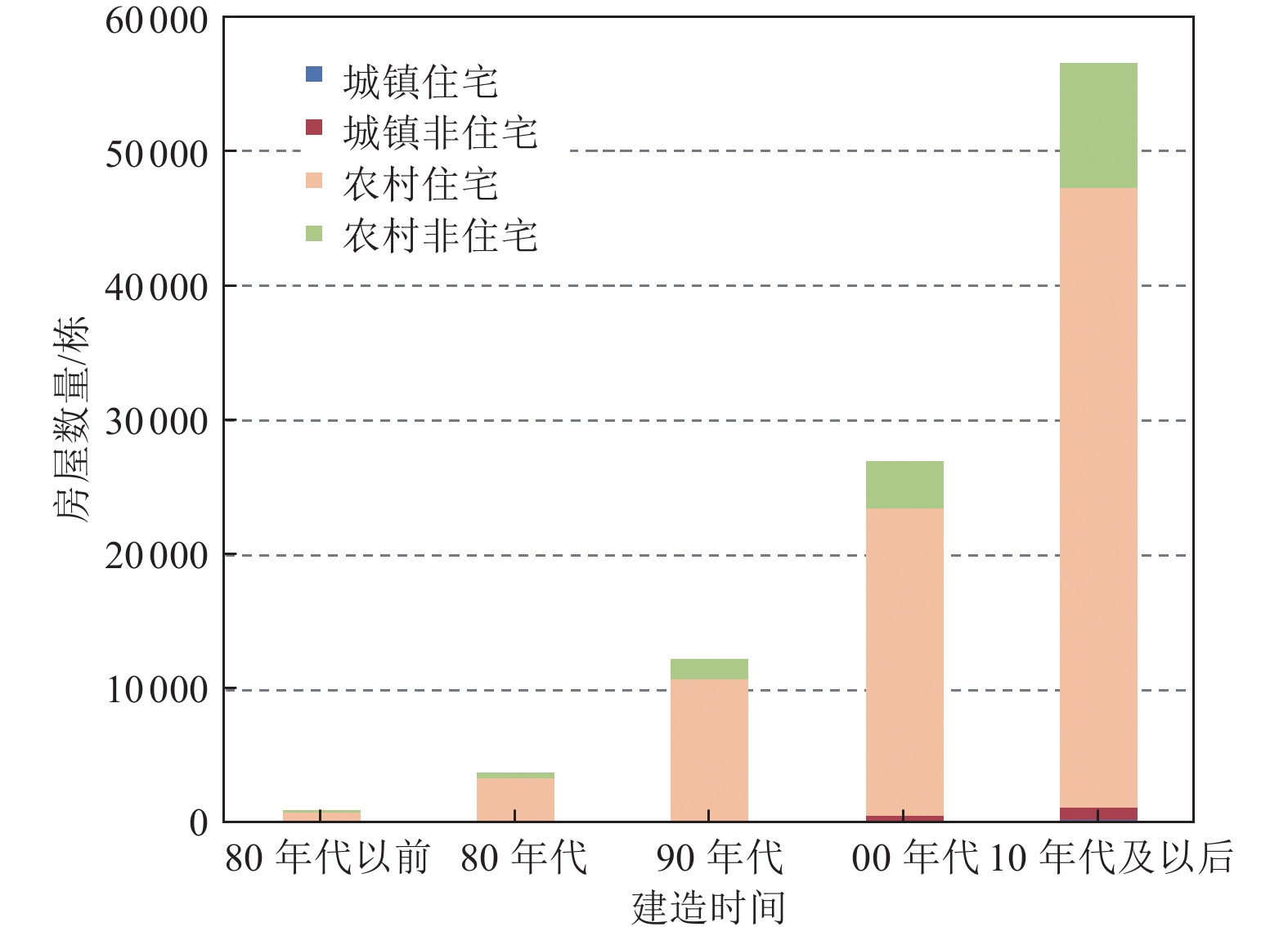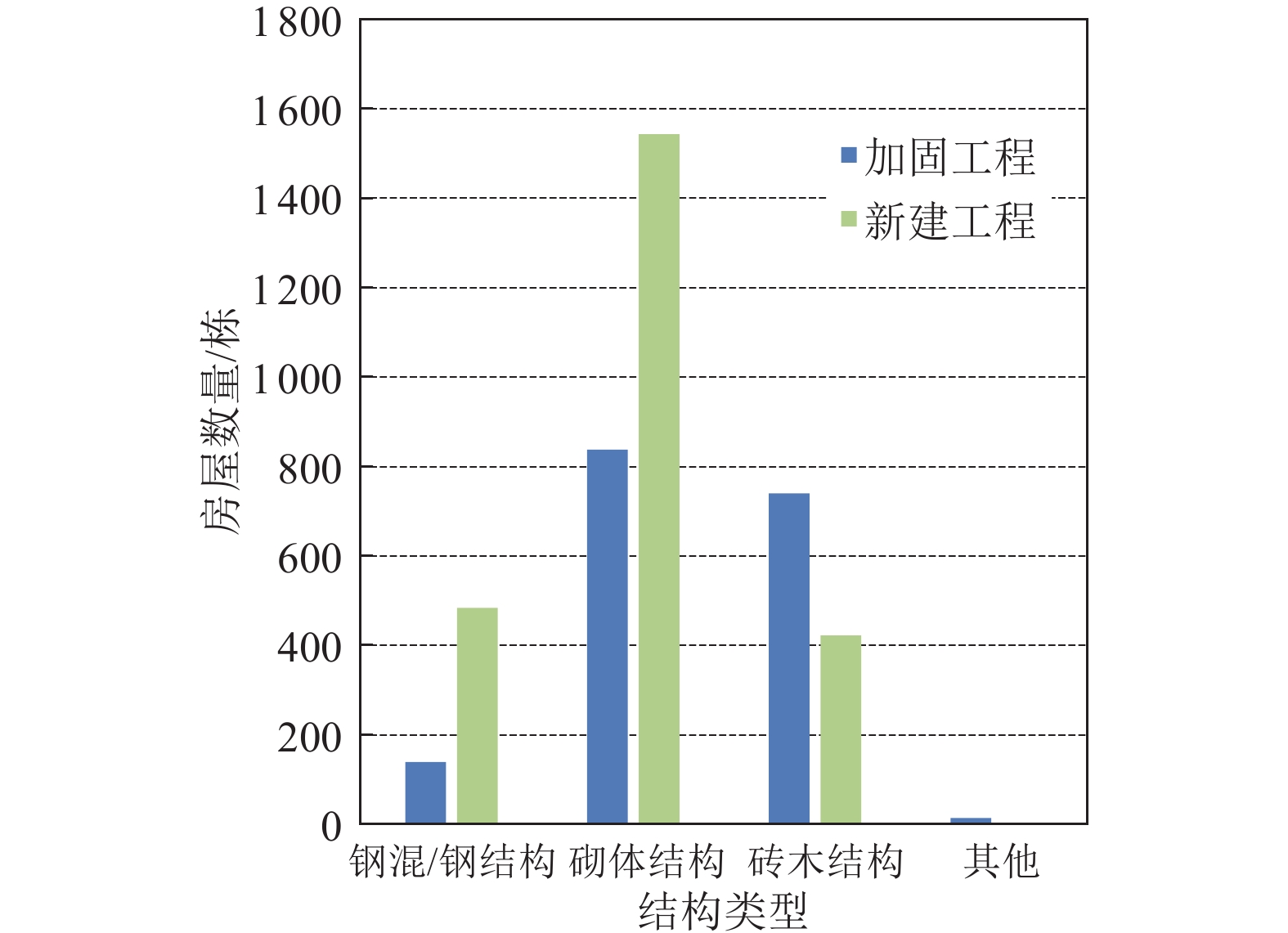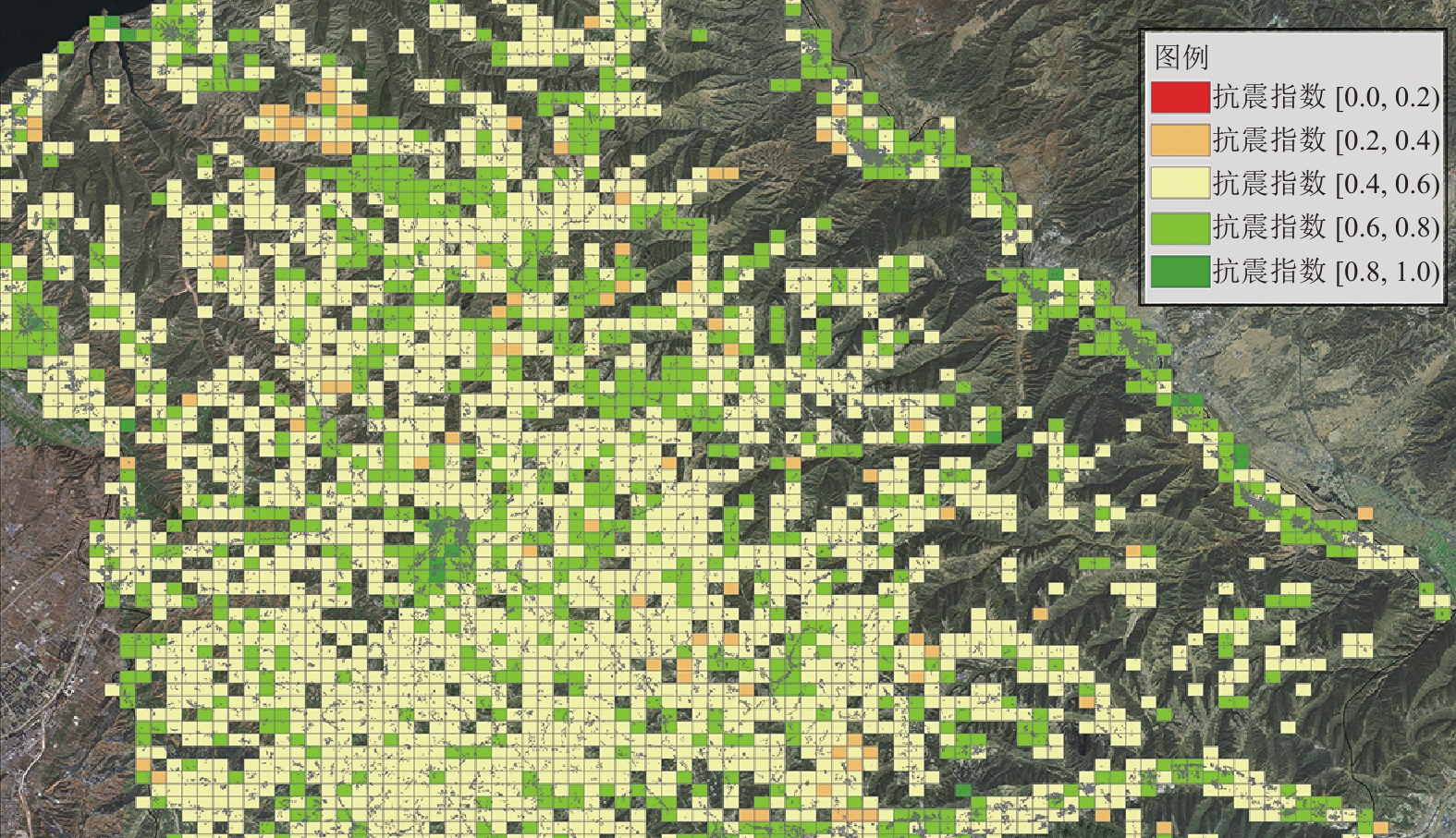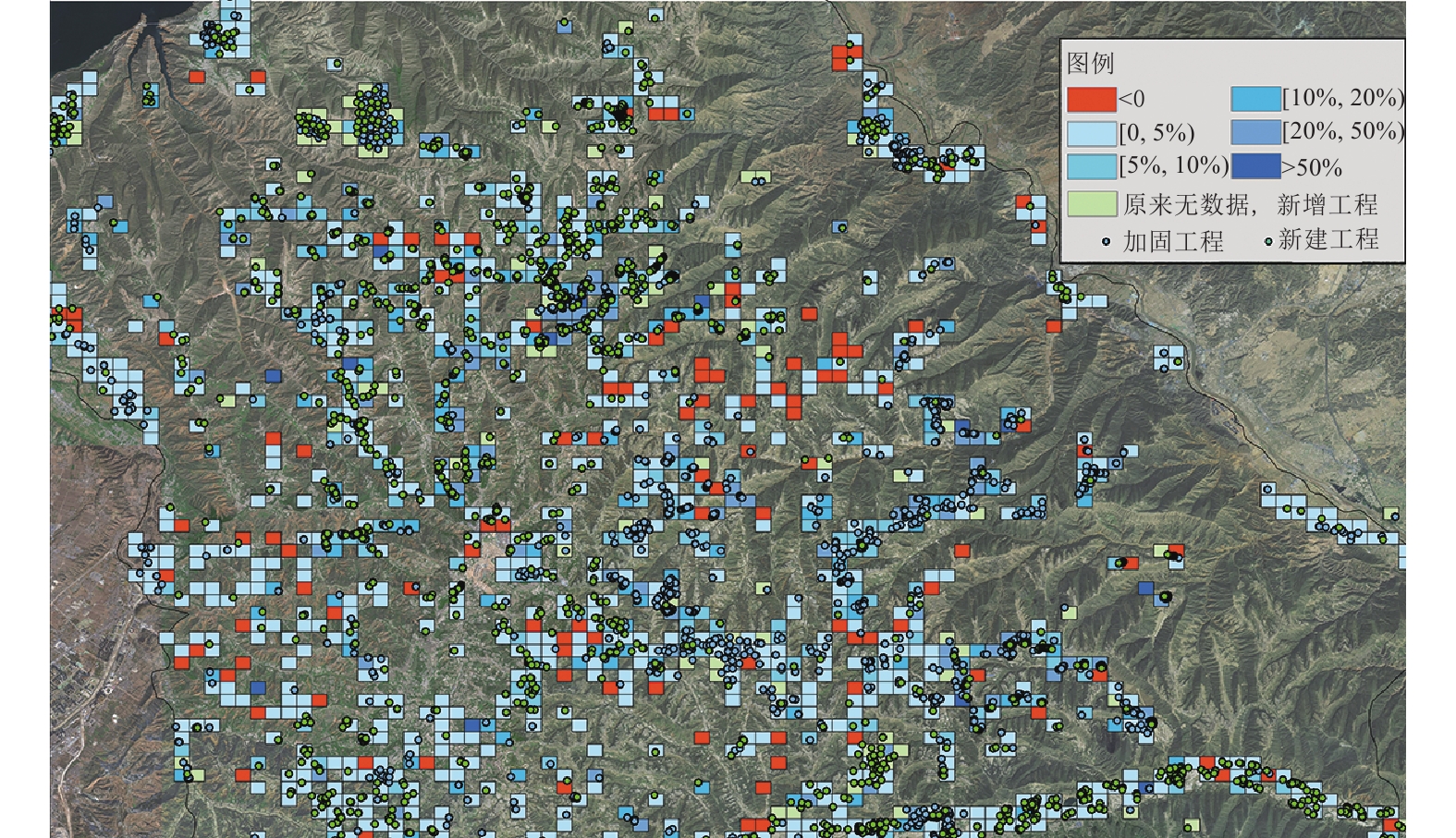Design and Implementation of National Information Management Platform for Seismic Fortification of Buildings and Facilities
-
摘要: 为满足地震易发区房屋设施抗震设防信息采集和管理的常态化业务需求,构建以县为基础,国家、省、市、县4级贯通、协调联动的信息采集和动态更新机制,设计并研发了可通过手机端和电脑端访问的全国房屋设施抗震设防信息采集和管理平台。该平台已服务全国范围内15万用户开展常态化加固工程和新建工程的信息采集与管理,完成百万条数据汇交,展现了较好的适用性。本文围绕信息采集、管理和服务介绍了平台的功能需求、整体架构、功能模块与业务流程,并在功能实现与应用的基础上进行了区域抗震能力变化分析,结合人工智能发展现状对平台智能化建设提出了未来构想。该平台可为摸清地震灾害风险底数、开展房屋设施信息采集和管理工作提供技术支撑。Abstract: In response to the normalized demand for information collection and management of seismic fortification of buildings and facilities in high-intensity areas, and for the information collection and dynamic update mechanism based on counties and interconnected at national, provincial, municipal, and county levels, a national platform for the collection and management of seismic fortification information for buildings and facilities has been designed and developed. This platform is accessible on mobile phones and computers. It has served 150,000 users and completed the collection of millions of data points. This paper introduces the functional requirements, overall architecture, functional modules, and business processes of the platform, focusing on information collection, management, and services. We also analyze the changes in regional seismic capacity based on the platform's functional implementation and practical application and proposes future ideas for the platform's intelligent development in conjunction with current advancements in artificial intelligence. The platform provides technical support for understanding the risk baseline of earthquake disasters and for collecting and managing information on buildings and facilities.
-
表 1 房屋设施基本信息和专项信息
Table 1. Basic and special information of buildings and facilities
分类 序号 数据项 获取方式 数据内容 通用信息 1 建筑物编号 自动 平台按照编码规则(地区+采集时间+流水号)赋予 2 建筑物经度 地图自动 读取地图经纬度坐标 3 建筑物纬度 4 所属省、市、县 地图自动、
手动可选全国各省、市、区县 5 工程地址 路名、门牌号,地图关联+人工修改 6 工程类别 预置选项 城镇住宅、大中小学校、医院、农村民居、
重要交通生命线、电力网络、电信网络、
水库大坝、危险化学品厂库、应急避难场所、其他7 工程类型 预置选项
通过实地调查或资料选择城镇住宅 砌体结构、钢混结构、砖木结构、钢结构、
木结构、土木结构、其他大中小学校 医院 农村民居 重要交通生命线 桥梁、隧道、其他 电力网络 电力设施、发电站、变电站、配套设施、其他 电信网络 电信设施、生产用房、其他 水库大坝 土石坝、重力坝、拱坝、水闸、水工地下结构、进水塔、
水电站压力钢管和地面厂房、渡槽、升船机、其他危险化学品厂库 设备装置、生产存储用房、其他 应急避难场所 室内、室外 其他 — 8 工程规模 部分必填
其余选填如桥梁-需按大、中、小桥等选择
医院-需按县级及以上、乡镇及以下等选择9 工程照片 拍照上传 房屋设施的工程图片,上限5张 10 补充信息 选填 — 加固工程 1 工程加固位置 填写 主体结构、非结构构件、其他 2 工程始建时间 选择 工程建造时间,精确到年月 3 工程加固时间 选择 工程加固完成时间,精确到年月 4 加固过程照片 选填 加固的施工前后照片 新建改建扩建工程 1 抗震设防情况 填写 6度/7度/8度/9度 2 工程竣工时间 自动、可改 工程完成时间,精确到年月 3 施工过程照片 选填 施工前后照片 应急避难场所 1 场所面积 填写 — 2 可容纳人数 填写 — 3 生活设施配备 选择 是、否 4 原厂址用途 选择 公园、学校、场馆、其他 5 工程完成时间 选择 场所完成时间,精确到年月 表 2 结构类型分布及占比
Table 2. Distribution and proportion of diffrent structure types
结构类型 占比/% 80年代以前 80年代 90年代 00年代 10年代 合计 砌体结构(含底框) 0.12 0.70 1.84 3.55 6.92 13.13 钢筋混凝土结构 0.05 0.16 0.97 3.62 16.71 21.51 钢结构 0.00 0.00 0.02 0.22 1.26 1.50 木结构 0.04 0.05 0.14 0.22 0.28 0.73 土木、石木结构 0.55 2.06 5.52 8.75 10.21 27.09 混合结构 0.21 0.56 3.33 9.70 18.98 32.78 其他 0.03 0.21 0.38 0.74 1.90 3.26 合计 1.00 3.75 12.19 26.80 56.26 — 表 3 VII度地震作用下区域抗震能力指数区间统计表
Table 3. Statistics of regional seismic capacity index interval (VII)
类别 区域抗震能力指数 平均指数 [0.8,1) [0.6,0.8) [0.4,0.6) [0.2,0.4) 区域数量/个 18 979 2330 96 0.581 区域占比/% 0.53 28.60 68.07 2.80 表 4 VII度地震作用下区域抗震能力指数区间变化统计表
Table 4. Statistics of regional seismic capacity index interval change(VII)
类别 区域抗震能力指数变化 [0,5%) [5%,10%) [10%,20%) [20%,50%) >50% 下降 区域数量/个 879 203 129 109 15 160 区域占比/% 55.42 12.80 8.13 6.87 0.95 10.09 -
蔡跃洲,陈楠,2019. 新技术革命下人工智能与高质量增长、高质量就业. 数量经济技术经济研究,36(5):3−22.Cai Y. Z., Chen N., 2019. Artificial intelligence and high-quality growth & employment in the era of new technological revolution. Journal of Quantitative & Technological Economics, 36(5): 3−22. (in Chinese) 段荟,张海,王东波,2023. 信息资源管理领域科研人员对ChatGPT态度、认知及应对策略研究. 情报理论与实践, 46 (7):17−24.Duan H. , Zhang H. , Wang D. B. , 2023. Researchers' attitude cognition and coping strategies towards ChatGPT in the domain of information resource management. Information Studies: Theory & Application, 46 (7): 17−24. (in Chinese) 顾维玺,2023. 类ChatGPT推动中国新型工业化发展. 中国信息界,(2):32−35. 郭红梅,赵真,张莹,2019. 基于微信公众平台的建筑物信息采集系统设计及实现. 震灾防御技术,14(4):890−898. doi: 10.11899/zzfy20190420Guo H. M., Zhao Z., Zhang Y., 2019. Design and implementation of building information collection system based on WeChat public platform. Technology for Earthquake Disaster Prevention, 14(4): 890−898. (in Chinese) doi: 10.11899/zzfy20190420 李姜,张合,刘志辉等,2021. 基于遥感影像的建筑抗震能力分析−−以张家口万全区为例. 震灾防御技术,16(2):371−380. doi: 10.11899/zzfy20210216Li J., Zhang H., Liu Z. H., et al., 2021. Analysis of seismic capacity of buildings based on remote sensing image−taking Zhangjiakou Wanquan district as an example. Technology for Earthquake Disaster Prevention, 16(2): 371−380. (in Chinese) doi: 10.11899/zzfy20210216 廖永丰,2019. 全国风险调查和重点隐患排查信息平台建设思路. 中国减灾,(9):16−23. doi: 10.3969/j.issn.1002-4549.2019.09.007 刘建,李静,何宗,2019. 建筑物信息实时云协同调查系统设计与应用. 地理空间信息,17(12):85−88. doi: 10.3969/j.issn.1672-4623.2019.12.024Liu J., Li J., He Z., 2019. Design and application of real-time cloud collaborative investigation system for building information. Geospatial Information, 17(12): 85−88. (in Chinese) doi: 10.3969/j.issn.1672-4623.2019.12.024 龙立,孙龙飞,郑山锁等,2016. 基于Android的城市建筑物信息外业采集系统研究. 震灾防御技术,11(3):682−691. doi: 10.11899/zzfy20160325Long L., Sun L. F., Zheng S. S., et al., 2016. Field data collection system for urban building information based on android. Technology for Earthquake Disaster Prevention, 11(3): 682−691. (in Chinese) doi: 10.11899/zzfy20160325 鲁钰雯,翟国方,2021. 人工智能技术在城市灾害风险管理中的应用与探索. 国际城市规划,36(2):22−31,39.Lu Y. W., Zhai G. F., 2021. Applications and exploration of artificial intelligence technology in urban disaster risk management. Urban Planning International, 36(2): 22−31,39. (in Chinese) 申淑娟,张欣欣,傅轩诚等,2022. 应急灾害防控管理机制与信息平台应用研究. 测绘与空间地理信息,45(10):168−171.Shen S. J., Zhang X. X., Fu X. C., et al., 2022. Research on emergency disaster prevention and control management mechanism and information platform application. Geomatics & Spatial Information Technology, 45(10): 168−171. (in Chinese) 宋俊锋,2022. 面向自然灾害和城市灾害的多源数据融合信息服务平台建设. 中国建设信息化,(20):70−72. 隋嘉,孙皓,张丽华等,2023. 青海省地质灾害监测预警信息化平台建设与实现. 中国地质灾害与防治学报,34(2):92−101.Sui J., Sun H., Zhang L. H., et al., 2023. Construction and realization of information platform for geological disaster monitoring and early warning in Qinghai Province. The Chinese Journal of Geological Hazard and Control, 34(2): 92−101. (in Chinese) 王东明,陈华静,陈敬一等,2021. 国家地震灾害风险防治业务平台功能设计与展望. 自然灾害学报,30(2):60−70.Wang D. M., Chen H. J., Chen J. Y., et al., 2021. Function design and prospect of platform of national earthquake disaster risk prevention and control. Journal of Natural Disasters, 30(2): 60−70. (in Chinese) 王德祥,王建波,2023. 新一代人工智能对数字经济的影响−−以ChatGPT为例. 特区实践与理论,(2):34−39. doi: 10.3969/j.issn.1673-5706.2023.02.006Wang D. X., Wang J. B., 2023. The impact of the new generation of artificial intelligence on the digital economy: taking ChatGPT as an example. Practice and Theory of SEZS, (2): 34−39. (in Chinese) doi: 10.3969/j.issn.1673-5706.2023.02.006 王辉山,肖健,郑韵,2017. 基于移动终端的地震应急辅助决策系统研究. 自然灾害学报,26(5):30−35.Wang H. S., Xiao J., Zheng Y., 2017. Analysis of earthquake emergency auxiliary decision system based on mobile terminals. Journal of Natural Disasters, 26(5): 30−35. (in Chinese) 王侃,2023. 石油石化行业信息化平台数据仓库设计初探. 中国石油和化工标准与质量,43(9):76−78. doi: 10.3969/j.issn.1673-4076.2023.09.026 魏建波,赵文吉,关鸿亮,2015. 贫困地区信息采集系统的设计与实现. 地理空间信息,13(1):4−7. 温进利,李婷,王林,2021. 山西省农业气象灾害预警信息化平台建设的实践与思考. 图书情报导刊,6(9):25−30. doi: 10.3969/j.issn.1005-6033.2021.09.005Wen J. L., Li T., Wang L., 2021. Research on the construction of agrometeorological disaster early warning information platform. Journal of Library and Information Science, 6(9): 25−30. (in Chinese) doi: 10.3969/j.issn.1005-6033.2021.09.005 肖峰,2023. 生成式人工智能介入知识生产的功用探析−−借助ChatGPT和“文心一言”探究数字劳动的体验. 重庆邮电大学学报(社会科学版),35(4):1−10. doi: 10.3979/1673-8268.20230424003Xiao F., 2023. Function analysis of generative artificial intelligence in knowledge production: Exploring the experience of digital labor with ChatGPT and ERNIE Bot. Journal of Chongqing University of Posts and Telecommunications (Social Science Edition), 35(4): 1−10. (in Chinese) doi: 10.3979/1673-8268.20230424003 谢礼立,2006. 城市防震减灾能力的定义及评估方法. 地震工程与工程振动,26(3):1−10. doi: 10.3969/j.issn.1000-1301.2006.03.001Xie L. L., 2006. A method for evaluating cities’ ability of reducing earthquake disasters. Earthquake Engineering and Engineering Vibration, 26(3): 1−10. (in Chinese) doi: 10.3969/j.issn.1000-1301.2006.03.001 徐柳华,陈捷,陈少勤,2012. 基于iPad的移动外业信息采集系统研究与试验. 测绘通报,(12):75−78.Xu L. H., Chen J., Chen S. Q., 2012. Mobile field data collection system using iPad: research and implementation. Bulletin of Surveying and Mapping, (12): 75−78. (in Chinese) 尹之潜,杨淑文,2004. 地震损失分析与设防标准. 北京:地震出版社. 郑慧,刘思含,2022. 人工智能与档案开发利用:应用、愿景与进路. 山西档案,(5):5−10,28. doi: 10.3969/j.issn.1005-9652.2022.05.002Zheng H., Liu S. H., 2022. Artificial intelligence and archives development and utilization: applications, visions and approaches. Shanxi Archives, (5): 5−10,28. (in Chinese) doi: 10.3969/j.issn.1005-9652.2022.05.002 周志华,2017. 广东省地质灾害防治信息化平台建设探析. 西部资源,(1):77−82. doi: 10.3969/j.issn.1672-562X.2017.01.032Zhou Z. H., 2017. Discussion on information platform construction of geological disaster prevention and control in Guangdong Province. Western Resources, (1): 77−82. (in Chinese) doi: 10.3969/j.issn.1672-562X.2017.01.032 Annunziato A. , Gadenz S. , Galliano D. , et al. , 2010. Field tracking tool: a collaborative framework from the field to the decision makers. In: Konecny M. , Zlatanova S. , Bandrova T. L. , eds. , Geographic Information and Cartography for Risk and Crisis Management. Berlin: Springer, 287−303. Greitans M. , Grunde U. , Jakovics A. , et al. , 2013. Web-based real-time data acquisition system as tool for energy efficiency monitoring. In: 2013 21st Telecommunications Forum Telfor (TELFOR). Belgrade: IEEE, 553−556 Faravelli M., Borzi B., Onida M., et al., 2023. An Italian platform for the seismic risk assessment of school buildings. Procedia Structural Integrity, 44: 107−114. doi: 10.1016/j.prostr.2023.01.015 -



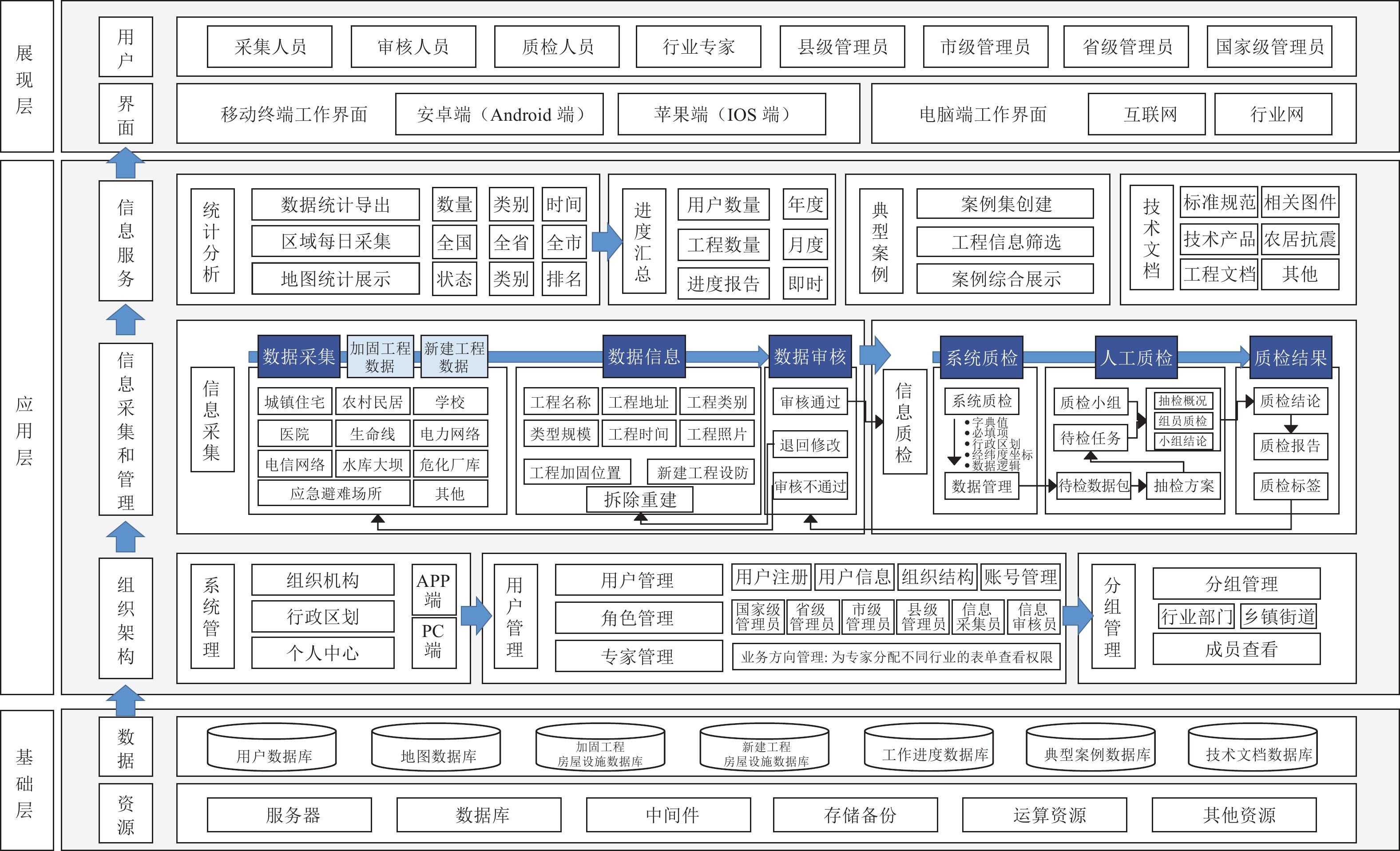
 下载:
下载:


